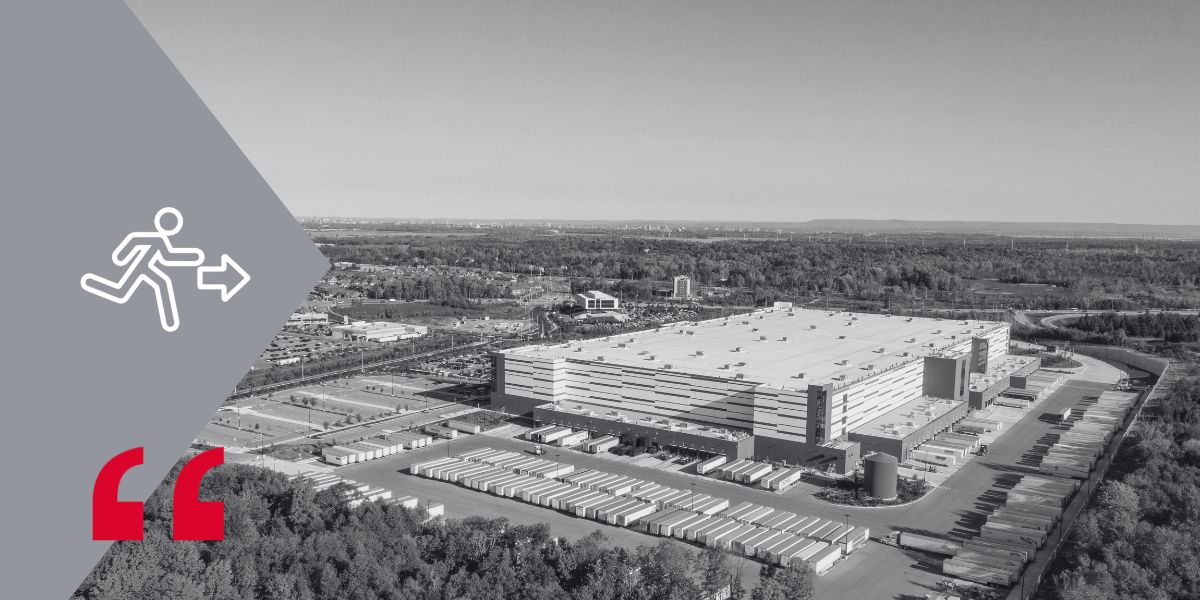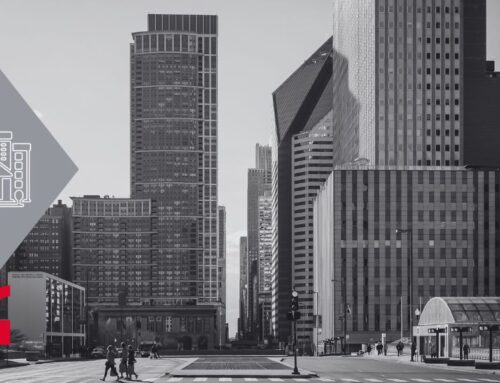In large industrial buildings, safety is a top priority. These spaces often house a large number of people and heavy machinery, which increases the risk of accidents, fires or other types of emergencies. To ensure an effective response in such situations, voice evacuation public address systems for industrial buildings have become an essential tool. These systems enable fast, clear and direct communication with workers, facilitating a safe and orderly evacuation.
What is voice evacuation public address for industrial buildings?
The voice evacuation public address system for industrial buildings is a communication system specifically designed for emergencies in industrial environments. Its main function is to deliver clear and direct voice messages indicating the steps to be taken during an evacuation. Unlike traditional sirens or alarms that only warn of danger, evacuation public address systems provide detailed instructions that guide people to the nearest exit points or to safe areas.
These systems can be programmed to broadcast pre-recorded messages or allow the direct intervention of an operator who, in real time, can direct the evacuation according to the evolution of the emergency. In large industrial buildings, where workers may be dispersed in different areas, this type of communication is vital to avoid confusion and ensure a quick and controlled exit.
Advantages of voice evacuation public address systems for industrial halls
Implementing a voice evacuation public address system for industrial buildings has multiple advantages that significantly improve safety and security plans for employees. Some of the most important are:
1. Clear and precise communication
In emergency situations, it is essential that instructions are as clear as possible. An industrial building voice evacuation public address system can provide specific messages that may vary depending on the location within the building or the nature of the incident. For example, in the event of a fire, employees closer to the exits may receive a different message than those in areas further away.
2. Wide area coverage
Industrial buildings often cover large areas, and a well-designed public address system ensures that every corner of the building is covered. From production areas to warehouses, messages are broadcast evenly, ensuring that everyone, regardless of location, receives the necessary instructions to evacuate safely.
3. Adaptability to different emergencies
One of the main advantages of these systems is their ability to adapt to different types of emergencies. Whether it is a fire, gas leak or explosion threat, the system can customise evacuation messages according to the situation. In addition, many of these systems allow for manual intervention, giving security managers the flexibility to issue messages in real time.
4. Integration with other security systems
Voice evacuation public address systems for industrial buildings can be easily integrated with other safety devices such as fire alarms, smoke detectors or video surveillance systems. This integration allows for a coordinated response, simultaneously activating alarms and voice messages that will guide workers out of the danger zone. This optimises response time and reduces the likelihood of human error in emergency management.
Considerations for the installation of a voice evacuation public address system in industrial premises
The installation of a public address system in an industrial building should not be taken lightly. There are several factors that must be taken into account to ensure that the system will perform its function efficiently in the event of an emergency. These factors include:
1. Size and layout of the building
The size and layout of the industrial building has a direct influence on the design of the industrial building’s voice evacuation public address system. Large areas require a greater number of loudspeakers and sound reinforcement devices to ensure that messages are clearly delivered to every corner. In addition, it is important to consider the location of emergency exits and areas with the highest concentration of personnel in order to optimise the distribution of sound emission points.
2. Ambient noise level
In many industrial buildings, the constant noise of machinery can be an obstacle to employees hearing clear evacuation instructions. Therefore, it is important to choose an industrial building voice evacuation public address system that is powerful enough to overcome background noise. Some advanced systems even have technology that automatically adjusts the message volume based on ambient noise.
3. Compliance with regulations
It is crucial to ensure that the public address voice evacuation system for industrial buildings complies with the safety regulations established for the industrial sector. These systems must be approved and certified for use in emergencies, and must pass regular performance tests to ensure that they will be ready in case of need. Regulations may vary from region to region, so it is essential to check current legislation before installing the system.
The importance of evacuation drills
The effectiveness of a public address voice evacuation system for industrial buildings depends on the training of the personnel using it. Regular evacuation drills are essential to familiarise workers with the procedures to be followed during an emergency. They also help to test the operation of the system and to detect possible failures or areas for improvement.
Conducting drills also helps to reduce panic in a real situation, as employees will know how to act and respond to the public address system’s instructions. The drills also help to evaluate the effectiveness of the system and its ability to coordinate with other safety devices installed in the building.
Conclusion
Voice evacuation public address systems for industrial buildings are a key element for safety in industrial buildings. Thanks to their ability to broadcast clear messages adapted to each situation, they enable a faster and safer evacuation. Furthermore, their integration with other security systems and their capacity to cover large areas makes them an essential solution in any industrial installation. Investing in a quality system, complying with regulations and carrying out periodic drills are measures that guarantee an effective response to any emergency.





